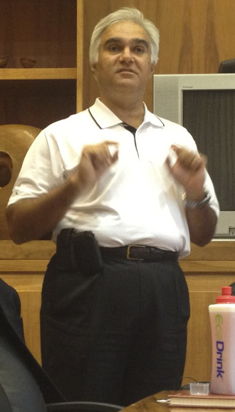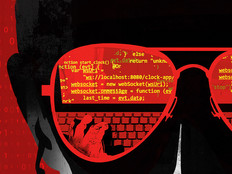Say Aloha to Hawaii's First CIO and a Technology Transformation
Sanjeev "Sonny" Bhagowalia became the state of Hawaii's first full-time CIO in July 2011. Reporting to the governor, Bhagowalia seeks to transform the state's outdated IT infrastructure into a modern system that will make government more efficient and improve services for residents.
He came to the job from leadership posts in federal agencies, including stints at the General Services Administration, the Department of the Interior and the FBI. Hawaii's CIO spoke with StateTech Managing Editor Amy Schurr about his 10-year plan and how his agency will accomplish its goals.
STATETECH: Describe the technology environment you encountered.
BHAGOWALIA: The environment was in bad shape — even worse than I expected. When I said it was about 20-plus years behind, I meant 30. I found two computers that were still running after 36 years — those people maintaining it ought to be given a MacGyver award. In one group, folks were getting parts on eBay to keep a VAX computer alive.
Despite very tough circumstances, the staff has kept things going. People have kept their chin up and tried to do their best. They've been funded at just 1.4 percent of the overall $11 billion state budget for so many years.
STATETECH: How did you take inventory?
BHAGOWALIA: I initiated a baseline assessment of the enterprise. That typically takes about a year to do, even on an expedited schedule, but we got it done in four months. We published it openly and are probably one of the few states that has ever done that. We also published the data center assessment and our benchmarking study. We found more than 500 systems, but since then, we've come up with about 750 systems. The confession booth was open for the next eight months, and the confessions came in.
STATETECH: What did you accomplish during your first year on the job?
BHAGOWALIA: When we completed the baseline assessment in four months, we met our deadline and actually beat it by a day. I wanted to prove that it's all about leadership, getting things done and giving people hope. Next, we completed our business and IT transformation plan in the next nine months — a year ahead of schedule. We got it done across 18 departments and 100 or so attached agencies.
I managed to get $25.3 million from the legislature to start the journey of reform. We also received $4.5 million from the Hawaii Community Foundation.
204 plus Business functions and services delivered by Hawaii state government employees in 18 departments
SOURCE:"Baseline of Information Management and Technology and Comprehensive View of State Services" (Hawaii Office of Information Management and Technology, September 2011)
STATETECH: What type of infrastructure improvements have you made?
BHAGOWALIA: When someone is dying by the side of the road, you've got to help them, and that's a metaphor for systems. I found new servers that had been lying around for two years and had not been deployed. We virtualized 34 servers and put them online. We improved directory services so people could start finding each other on the e-mail system. We took some measures to improve our security, and we also made some improvements to start web and open data.
We did proof-of-concept projects because the things I was talking about sounded like Greek to some people: cloud, mobile government, open government.
And we have managed to get the infrastructure division $3.4 million in the supplemental budget for much-needed improvements. For example, I said, "This is a disaster waiting to happen. You're sitting in the tsunami zone, your data center is below sea level, and you're 1.5 miles away or less from the water."
STATETECH: How have you fostered teamwork?
BHAGOWALIA: I created a collaborative spirit among the 18 agency CIOs and got them to start talking to each other and working together. People have started to communicate with each other.
Part of the cultural challenge here is that while I oversee the entire portfolio, the CIOs don't report to me. Everyone has their own rice bowls, and I tell them, "Enjoy your rice, but do you mind also sharing that for the general pool?" Right now the collaborative spirit is alive, and we are working together toward a common goal.
STATETECH: So, how will you accomplish that goal?
BHAGOWALIA: First and foremost, let's unify the infrastructure with shared services, and put people in charge of something. The Hawaiian word kuleana means accountability and responsibility. Next, focus on the mission.
STATETECH: What are the flagship IT initiatives of the transformation strategy?
BHAGOWALIA: We've identified six. An enterprise resource planning system will unify our financial management, HR, payroll, time and attendance and so forth. We have some pretty good healthcare here; our hospitals are probably among the best around. But we need to unify the health IT environment. The Hawaii Broadband Initiative seeks to have ubiquitous access by 2018. Two others are the longitudinal data system for education and infrastructure improvements.
And the sixth initiative is tax modernization. The tax department reached out to me to make transformation happen. They did business process re-engineering, and we managed to get tax returns out to the citizens faster than they received them before.
STATETECH: What is your overall goal for using technology?
BHAGOWALIA: It's really not about IT; it's about information. Our vision is to make sure that the authorized users have access to the information for their mission anywhere, anytime, on any device securely and reliably. We want to be the No. 1 digital state in the union and engage with citizens to provide services online.
Look out for Hawaii. There is a turnaround happening, and there are exciting opportunities. Aloha and Mahalo!










